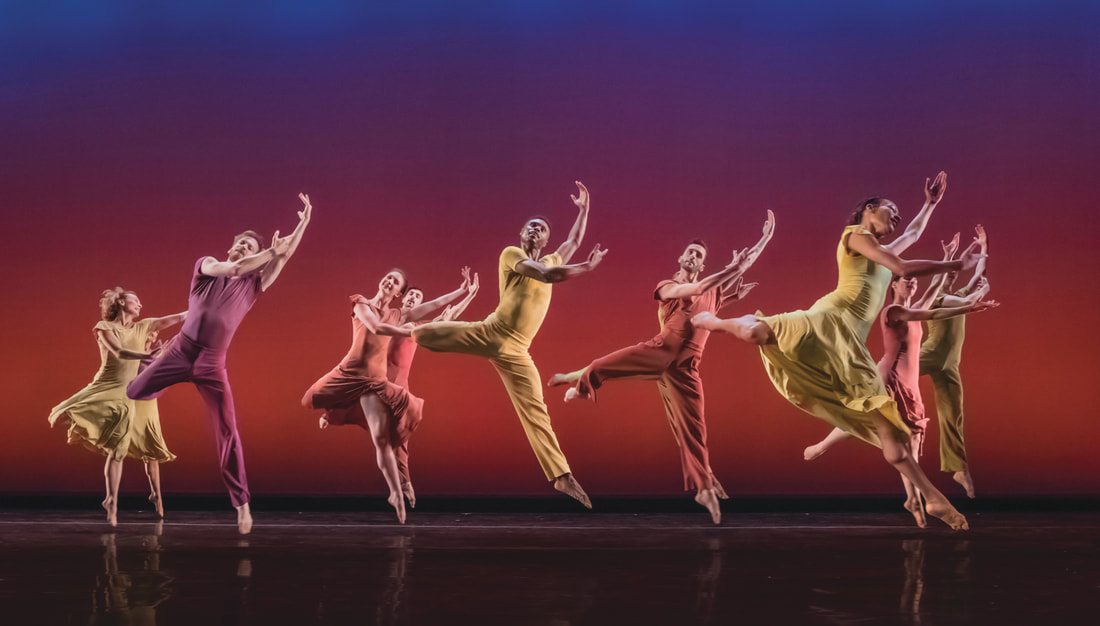|
Limon Dance Company danced the delightful "Waldstein Sonata" on Friday night at The Egg. Limon Dance Company, one of the oldest continuous running American modern dance ensembles, gave Friday night’s Egg audiences a lesson in the art’s history.
For a dance fanatic like myself, seeing these historic and ground-breaking works underscores the legacy and how far the art has progressed. But I could see that for some in the audience, these works were difficult as they were small and delicate, not layered with bombastic blazes that audiences, myself included at times, expect and find appealing today. Regardless, I can say I was taken with this four-piece program as it was beautiful, elegant and the dancing was sublime. Consider the opener, Doris Humphrey’s 1929 “Air for the G String,” to music of the same name by Bach. Though there was a technical glitch with the music at the start, the dance for five women was deeply touching. Wearing long flowing robes of gold, the dancers walk, uplift their arms and twirl with a fluid grace in a way that elevates simplicity to a celestial level. It was divine. The rest of the program featured works by Jose Limon, founder and artistic director of the company, which was established in 1946. Among the oldest works was his “Chaconne,” a dance created in 1942 for the Humphrey-Weidman Studio Theater. Set to Bach’s “Partita No. 2 in D minor” for violin, the solo, as performed by Savannah Spratt, was a portrayal of strength and dignity. Spratt began in a spotlight, stepped out of it like a matador into an arena to face an undefined darkness. She was regal as her movement swung from soft to sharp, without ever giving ground to the unseen. Overall, it was a serious program which also included Limon’s 1972 “Orfeo,” a work based on the Greek myth of Orpheus and Eurydice, lovers divided by death. As the story goes, Orpheus’s musical brilliance on the lyre softened the heart of Hades who would allow Eurydice to return to Earth with Orpheus, on the condition neither look back at the underworld. The dance, set to Beethoven’s String Quartet Opus 95, began with a Orfeo, as portrayed by Nicholas Ruscica, performing a mournful dance. The control and anguish, as he reached out and then folded back in as if his insides crumbled, shot across the house. His beloved, danced by Frances Lorraine Samson, then appeared covered in a long, sheer cloth. Escorted by a trio of underworld nymphs, she was released and the two embraced in a sensuous duet that ended in a kiss -- a fatal mistake sending her away from Orfeo once again. While I was enamored by these works, the “Waldstein Sonata” was the evening’s most enjoyable. Set to Beethoven’s Piano Sonata No. 21 in C Major, this happy dance was created on four couples who frolic and float in intriguing formations through the bright music. It was a charming closer to an enlightened evening.
0 Comments
Leave a Reply. |
Wendy
|

 RSS Feed
RSS Feed
